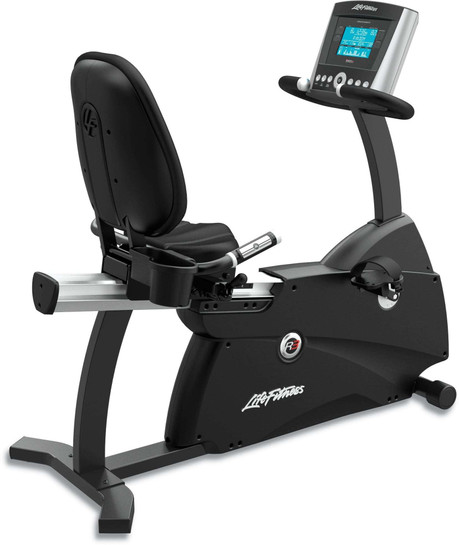The tension of my recumbent is very high
Understanding the tension on your recumbent
When it comes to riding a recumbent bike, understanding the tension is crucial for a smooth and efficient ride. The tension refers to the resistance you experience while pedaling. It can be adjusted to make your workout more challenging or easier, depending on your fitness level and goals.
The effects of high tension on your recumbent
If the tension on your recumbent bike is set too high, it can have several negative effects on your riding experience. Firstly, it can make pedaling extremely difficult, causing you to exert more effort and strain your muscles unnecessarily. This can lead to fatigue and even increase the risk of injury.
Secondly, high tension can make your ride uncomfortable. It puts excessive pressure on your joints, particularly your knees and hips, making it harder to maintain proper form and increasing the likelihood of developing joint pain or discomfort.
Lastly, riding with high tension can hinder your progress and discourage you from continuing your fitness journey. It can make your workouts feel more like a chore rather than an enjoyable activity, reducing your motivation to exercise regularly.
Why it's important to balance and optimize the resistance
Balancing and optimizing the resistance on your recumbent bike is essential for several reasons. Firstly, it allows you to tailor your workout to your specific fitness level and goals. By adjusting the tension, you can make your workout more challenging as you progress or make it easier if you're just starting out or recovering from an injury.
Secondly, finding the right tension can help you maintain proper form and technique while pedaling. It ensures that your muscles are being engaged effectively and evenly, reducing the risk of developing muscle imbalances or overworking certain muscle groups.
Lastly, optimizing the resistance on your recumbent bike can enhance the overall efficiency of your workouts. It allows you to get the most out of your exercise session by targeting different muscle groups and improving your cardiovascular endurance.
Tips for adjusting the tension on your recumbent
Adjusting the tension on your recumbent bike may seem intimidating at first, but with the right approach, it can be a simple and straightforward process. Here are some tips to help you get started:
- Start with a comfortable resistance level: If you're new to recumbent biking or haven't exercised in a while, begin with a low tension setting. This will allow your body to adapt gradually and prevent any unnecessary strain or discomfort.
- Experiment with different levels: As you become more comfortable with the bike, gradually increase the tension to make your workouts more challenging. However, be mindful not to go too high too quickly, as this can lead to muscle fatigue or injury. Find a resistance level that pushes you without compromising your form.
- Listen to your body: Pay attention to how your body feels while riding. If you're experiencing excessive strain, joint pain, or discomfort, it may be a sign that the tension is too high. Adjust it accordingly to ensure a safe and enjoyable ride.
Common mistakes to avoid when adjusting the tension
While adjusting the tension on your recumbent bike, it's important to avoid some common mistakes that can negatively impact your riding experience. Here are a few to keep in mind:
- Going too high too soon: It can be tempting to crank up the tension to the maximum level, thinking it will give you a more intense workout. However, this can put unnecessary strain on your muscles and joints, increasing the risk of injury. Gradually increase the tension as your fitness level improves.
- Ignoring proper form: Adjusting the tension shouldn't compromise your form. Make sure that you're maintaining proper posture, with your back supported and your legs pedaling smoothly. If the tension is causing you to strain or lose proper form, it may be too high.
- Neglecting regular adjustments: Your fitness level and goals may change over time, so it's important to regularly reassess and adjust the tension accordingly. Don't forget to check and fine-tune the resistance setting to ensure an effective and efficient workout.
The benefits of finding the right tension for your recumbent
Finding the right tension for your recumbent bike can offer numerous benefits for your overall fitness and well-being. Here are some advantages of optimizing the resistance:
- Improved muscle strength: By finding the right tension, you can effectively target and engage different muscle groups, leading to improved muscle strength and tone. This can enhance your overall physical performance and help prevent muscle imbalances.
- Increased cardiovascular endurance: Adjusting the tension on your recumbent bike can make your workouts more challenging, thereby boosting your cardiovascular endurance. Regular training at the appropriate tension level can improve your heart and lung health, allowing you to sustain longer and more intense workouts.
- Enhanced calorie burning: Riding with the right tension can increase the intensity of your workouts, resulting in more calories burned. This can be beneficial if your goal is weight loss or weight maintenance.
Recommended maintenance for keeping the tension optimal
To ensure that the tension on your recumbent bike remains optimal, regular maintenance is essential. Here are some recommended maintenance tips:
- Clean and lubricate: Regularly clean and lubricate the moving parts of your recumbent bike, including the resistance mechanism. This will prevent any buildup of dirt or grime that could affect the tension or the smoothness of your ride. Never lubicate your drive belt.
- Check for wear and tear: Inspect the tension mechanism and cables for any signs of wear and tear. If you notice any fraying or damage, it's important to replace or repair the affected parts promptly to maintain optimal tension.
- Follow manufacturer's guidelines: Always refer to the manufacturer's guidelines for specific maintenance instructions for your recumbent bike. This will ensure that you're taking the necessary steps to keep the tension at its best.
How to troubleshoot tension issues on your recumbent
Sometimes, despite your best efforts, you may encounter tension issues on your recumbent bike. Here are some troubleshooting tips to help you resolve common problems:
- Check cable tension: If the tension feels inconsistent or too loose, check the cables connecting the resistance mechanism. Make sure they are properly tightened and not worn out. Adjust or replace them if necessary.
- Inspect the resistance mechanism: If the tension is not adjusting properly or feels stuck, inspect the resistance mechanism for any obstructions or damage. Clean or repair the mechanism as needed to restore optimal tension.
- Seek professional assistance: If you're unable to troubleshoot the tension issues on your own, it's advisable to seek professional assistance. A qualified technician will be able to diagnose and fix any underlying problems to ensure your recumbent bike is functioning optimally.
Expert advice on achieving the perfect balance
To achieve the perfect balance of tension on your recumbent bike, we reached out to an expert in the field, Dr. Sarah Johnson, a renowned sports physiologist. According to Dr. Johnson, "Finding the right tension for your recumbent is a personal journey. It's important to start with a resistance level that is challenging but still allows you to maintain proper form and pedaling technique. Gradually increase the tension as you become stronger and more comfortable with the bike."
Dr. Johnson also emphasizes the importance of listening to your body. "If you're experiencing excessive strain, joint pain, or discomfort, it's a sign that the tension is too high. Don't be afraid to adjust it to a level that feels comfortable and safe. Remember, the goal is to enjoy your ride while still challenging yourself."
Conclusion: Enjoying a smooth and efficient ride on your recumbent
In conclusion, balancing and optimizing the tension on your recumbent bike is crucial for a smooth and efficient ride. By understanding the effects of high tension and why it's important to find the right resistance, you can enhance your overall fitness journey. By following the tips for adjusting the tension, avoiding common mistakes, and regularly maintaining your recumbent bike, you'll be able to enjoy the numerous benefits of finding the perfect tension. Remember to listen to your body, seek expert advice when needed, and most importantly, enjoy the journey towards conquering the high tension on your recumbent bike. Happy riding!
CTA: Ready to conquer the high tension on your recumbent bike? Start by adjusting the resistance level to a comfortable setting and gradually increase it as you become stronger and more comfortable. Remember to listen to your body and avoid common mistakes. Regular maintenance is also key to keeping the tension optimal. For expert advice and more tips on achieving the perfect balance, reach out to a qualified technician or consult a sports physiologist. Enjoy a smooth and efficient ride on your recumbent bike today!


